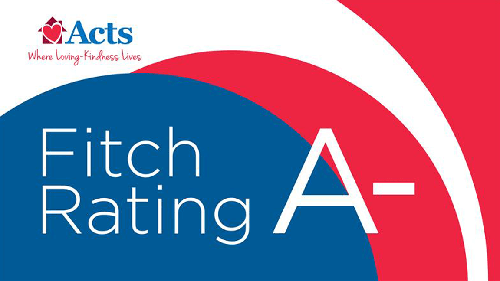How to Downsize for Retirement
 Many people have yet to determine their living situation after retirement. Will they age in place? Or will they move, and if so, to where? For some, the decision is easy — they want the breadth of social opportunities and absence of home and lawn care responsibility that comes with living in a retirement community. Still others want to remain in their current home for as long as possible. But what often becomes true for both preferences is that, eventually it becomes impractical to retain a large family home. The cost of insurance, upkeep, utilities, and taxes feel like burdens against your post-retirement earnings, and as we age further it can become unsafe to walk up and down stairs, continue cleaning a large space, and other considerations. For this reason and others, many retirees often consider ways to downsize their living situation.
Many people have yet to determine their living situation after retirement. Will they age in place? Or will they move, and if so, to where? For some, the decision is easy — they want the breadth of social opportunities and absence of home and lawn care responsibility that comes with living in a retirement community. Still others want to remain in their current home for as long as possible. But what often becomes true for both preferences is that, eventually it becomes impractical to retain a large family home. The cost of insurance, upkeep, utilities, and taxes feel like burdens against your post-retirement earnings, and as we age further it can become unsafe to walk up and down stairs, continue cleaning a large space, and other considerations. For this reason and others, many retirees often consider ways to downsize their living situation.
In this article, we highlight the most important aspects to know about how to downsize your home for retirement. Keep reading to out what options you have, and how you can plan and execute your downsizing successfully.
Planning for Downsizing
Evaluating how and where you will live after retirement requires careful consideration and extensive research. You must assess all of the following:
- Do you wish to live within the same community or move somewhere else, perhaps closer to friends or family or near a beach you’ve always dreamed of or something else entirely?
- How much space do you need to be comfortable? How much space becomes too much space and makes you feel uncomfortable?
- Can you afford the taxes and maintenance costs of your current home post-retirement?
You need to be in an environment with access to quality medical care and all the amenities you want for convenience and effortless living. While your move can be a busy and nerve-wracking phase, if you execute it properly, you can live comfortably for the rest of your life.
You should also talk to your loved ones and consider their input in your final decision. Plan for unexpected scenarios — particularly medical conditions, which are more likely to increase as you grow older.
What is Your Goal?
 There are several related reasons for downsizing: to save money in equity, monthly payments or maintenance costs (financial); to move closer to family, friends, and essential service providers and amenities (lifestyle); and to avoid unnecessary home care, risk, and other considerations of being on your own in a larger-than-necessary home (safety). In retirement, most older adults have these three goals:
There are several related reasons for downsizing: to save money in equity, monthly payments or maintenance costs (financial); to move closer to family, friends, and essential service providers and amenities (lifestyle); and to avoid unnecessary home care, risk, and other considerations of being on your own in a larger-than-necessary home (safety). In retirement, most older adults have these three goals:
- Travel – how will you afford the trips you wish to make if you want to see the world?
- Grandchildren – are you close to your family, and if so, how often will they visit? Is it worth the cost of staying in your current house? If moving, how will your move affect your relationship with them?
- Leisure – how will you spend your days? What do you like to do? Your new home should support your current interests/hobbies/plans/social preferences.
Ensure you have these goals at the forefront of your mind as you consider how to downsize for retirement.
When Should You Move?
When you move is nearly just as important as where you move. You want to consider the value of houses where you are and where you want to go, interest rates, and lifestyle goals. If you downsize soon after retirement, plan carefully how you’ll manage your income and costs over the longer term. If you need to delay downsizing to avoid losses on your sale, then stay in place for a little while longer.
What Are Your Living Options?
Determining where your next home will be is a critical decision. Ideally, you want your next home to be your last home, so think carefully about your changing physical, social, emotional, and medical needs. The reason Continuing Care Retirement Communities such as Acts communities are so popular is that they offer a safe, comfortable place to live, in multiple varieties from single-family cottages to apartments, with numerous social activities and hobbies, with consistent costs that don’t change just because your level of healthcare need increases. It combines the best of all worlds for one ideal post-retirement living experience.
Of course, you and your family should carefully assess your goals and financial ability before choosing your new living arrangement.
How to Downsize for Retirement
 Ideally, you want to time and execute your downsizing plans such that you sell your home for a profit, move into a smaller situation, and invest the difference to boost your income. But this seldom happens because of external market forces, among other reasons. If you’re thinking about selling and buying a smaller place, here’s what you need to know:
Ideally, you want to time and execute your downsizing plans such that you sell your home for a profit, move into a smaller situation, and invest the difference to boost your income. But this seldom happens because of external market forces, among other reasons. If you’re thinking about selling and buying a smaller place, here’s what you need to know:
Don’t Overestimate the Value of Your Current Home
Use real estate websites to find out how much homes like yours in your area have sold for. You can also use major banks’ online estimators to determine your home value – check several to find the average cost, but remember these are just estimates. The best way to establish the true value is to engage an independent valuer – even realtors may give you rosier estimates because they want you to sign with them.
Don’t Under-Estimate Your New Home
Similarly, don’t under-estimate the cost of your new home; even if you’re downsizing, it is possible to spend more than your home sold for. Do your research as above, and spend time actually visiting the communities you’re considering. For serious contenders, check out the neighborhood in different seasons to confirm that you’ll be comfortable there. Be sure to discuss all costs involved, from amenities to healthcare.
Consider Your Taxes
Check with your realtor whether you owe income taxes if you sell your home for a profit. Most rules are explained in the IRS Publication 523 – Selling Your Home. Even without capital gains taxes, some localities have higher property taxes, income taxes on pension, or sales taxes. Compare your home’s current tax plan with your destination’s taxes. Find out whether the new tax regimen increases or decreases your net taxes before moving.
Remember Closing Costs
 Finally, don’t forget to account for the closing costs – legal fees, appraisal fees, title insurance, recording fees, realtor commissions, and other miscellaneous charges. Negotiate with the realtor for the most favorable rate at the beginning. Depending on the market, you may be able to haggle with the seller to absorb some of your closing costs too.
Finally, don’t forget to account for the closing costs – legal fees, appraisal fees, title insurance, recording fees, realtor commissions, and other miscellaneous charges. Negotiate with the realtor for the most favorable rate at the beginning. Depending on the market, you may be able to haggle with the seller to absorb some of your closing costs too.
Plan for Stress-Free Downsizing
Whether you’re moving across the neighborhood, town, or country, you should carefully think through and plan for your retirement living. Downsizing properly should help you to save money and reduce pressure on yourself, while enjoying the lifestyle you’ve always envisioned.
Use these tips to plan for a hassle-free move when downsizing. If you need more help, be sure to check this link for more information on how to downsize your home for retirement.





